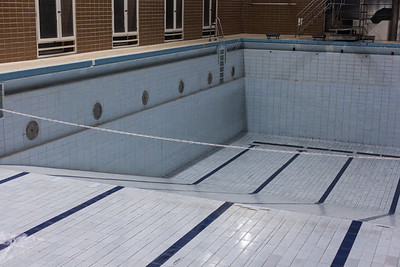Last fall, I wrote about the decision that the Trustees at West Shore Community College must make regarding the campus recreation center. WSCC is one of Michigan’s smallest community colleges and it’s 50-year-old swimming pool is at the end of its useful life. The recreation center needs additional work, and the Trustees must decide whether to rehab the pool – at an estimated cost of $5.75M – or let the pool go.
Earlier this month, the WSCC Trustees voted to accept an architectural proposal for a rebuild of the school’s recreation center. The project, which will cost about $8M, does not include money to refurbish the center’s end-of-life swimming pool.
The plan includes about $2.5M for the replacement of the facility’s heating and cooling equipment and the associated trades work. Additionally, the rehabbed building will include a new fire suppression system.
The decision to close the pool is not yet final. Residents have been trying hard to convince the Board to come up with the funds to replace the pool and renovate the complex it occupies. Repairing the pool simply isn’t an option. (And it’s not as though the school hasn’t already plowed millions into maintaining the pool and performing repairs as needed.)
Currently, the pool is leaking, and loses nearly 50,000 gallons of water per year. The pool deck is end-of-life and needs to be replaced. The recreational equipment associated with the pool needs to be replaced, and it costs nearly five times as much to operate the pool as the revenue it generates.
Let me repeat that last part: it costs FIVE TIMES more to operate the pool than the revenue the pool generates. The takeaway here is that no matter how much users love the pool, pools are expensive to operate and more expensive to replace.
Swimming pool isn’t likely to pass fiscal muster
WSCC has transferred on average nearly $100,000 per year to the recreation center to cover the pool’s operating losses. As the Trustees pointed out, the pool requires daily maintenance, whether it’s being used or not. It also requires staffing – including at least 8 certified life guards. (And the liability insurance that goes along with operating a swimming pool.) The daily maintenance and staffing costs contribute to the operational losses. At some point, the Trustees will need to make decisions about rebuilding the pool and continuing to lose money on its operations or walking away from the pool.
A group of users wants to find a way to continue funding pool operations. According to WSCC records, about 120 different people use the pool at least monthly. To recover the cost of rebuilding the pool over 25 years for that number of users, the recreation center would need to charge each user $160 per month to use the pool. Even tripling the number of users (which is not likely) would require access fees of $55 per month for 25 years. And that doesn’t cover the cost of operation, or the debt service.
The WSCC Trustees have not yet shut the door on allowing the pool to remain open. In their most recent meeting, however, they did point out that Grand Rapids Community College, Muskegon Community College, and Oakland Community College have all closed their swimming facilities in recent years due to their exorbitant operational costs.
Makes you wonder exactly how much the swimming facilities at WCC are costing the Washtenaw County taxpayers, and what the long-term operational and replacement plans are, doesn’t it?
Photo Credit: Dario-Jacopo Lagana























